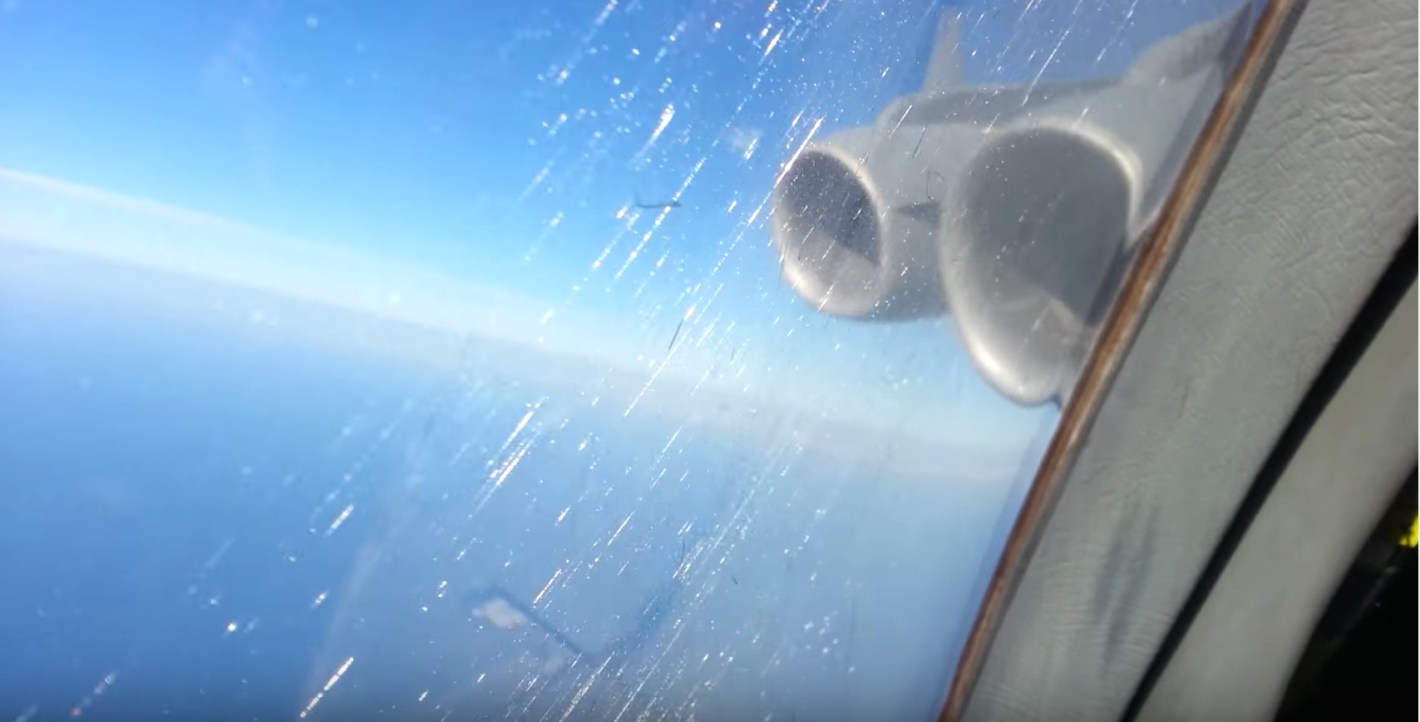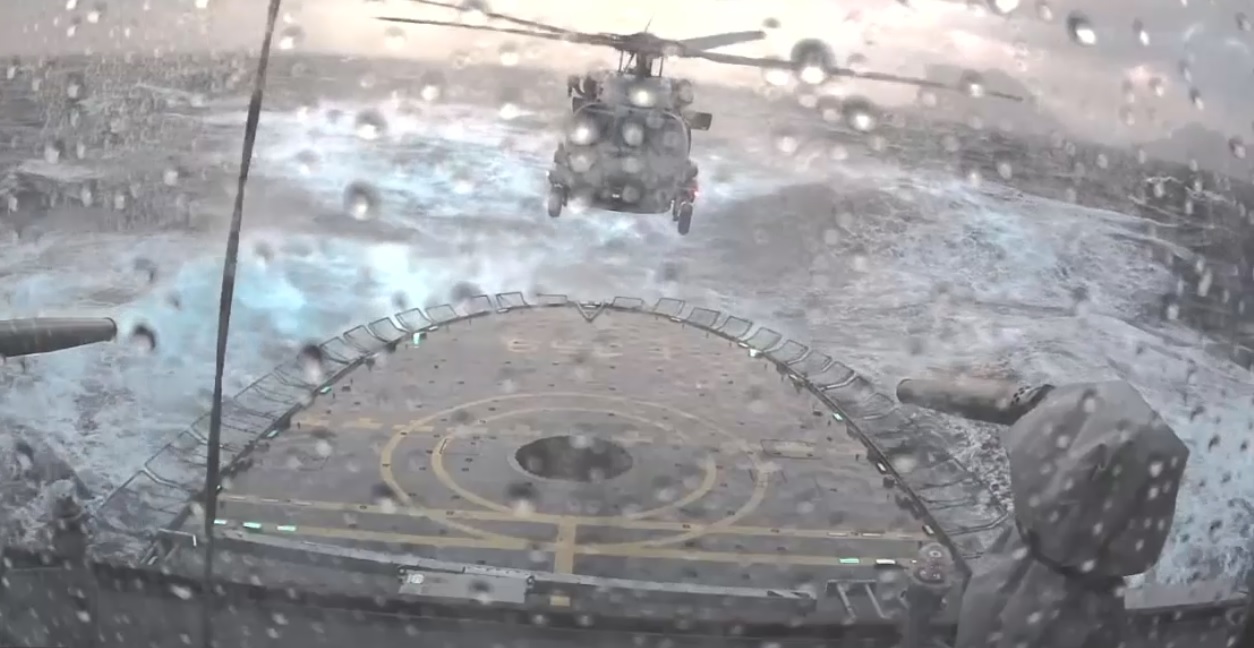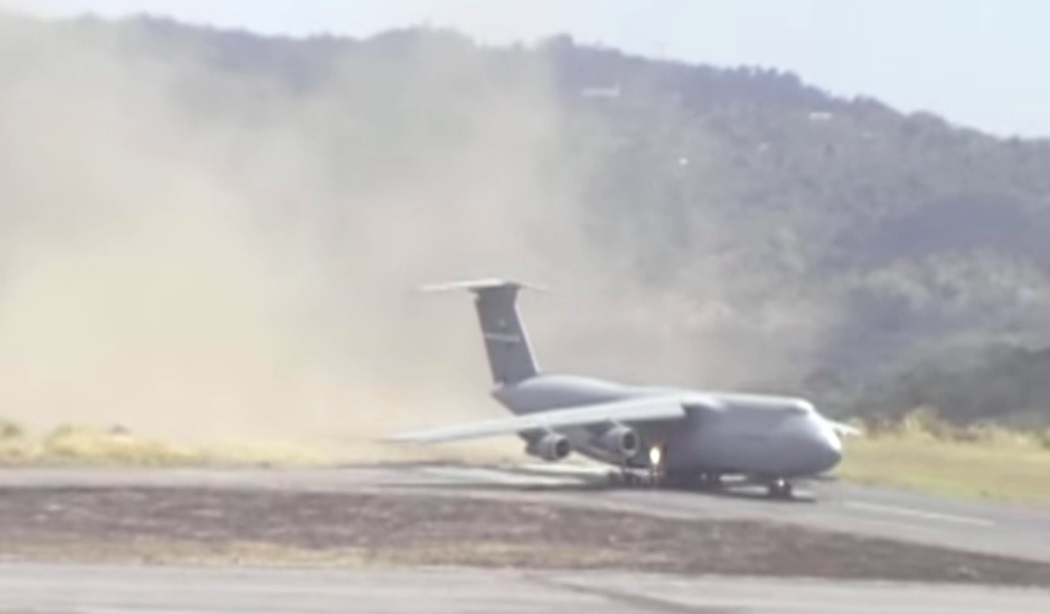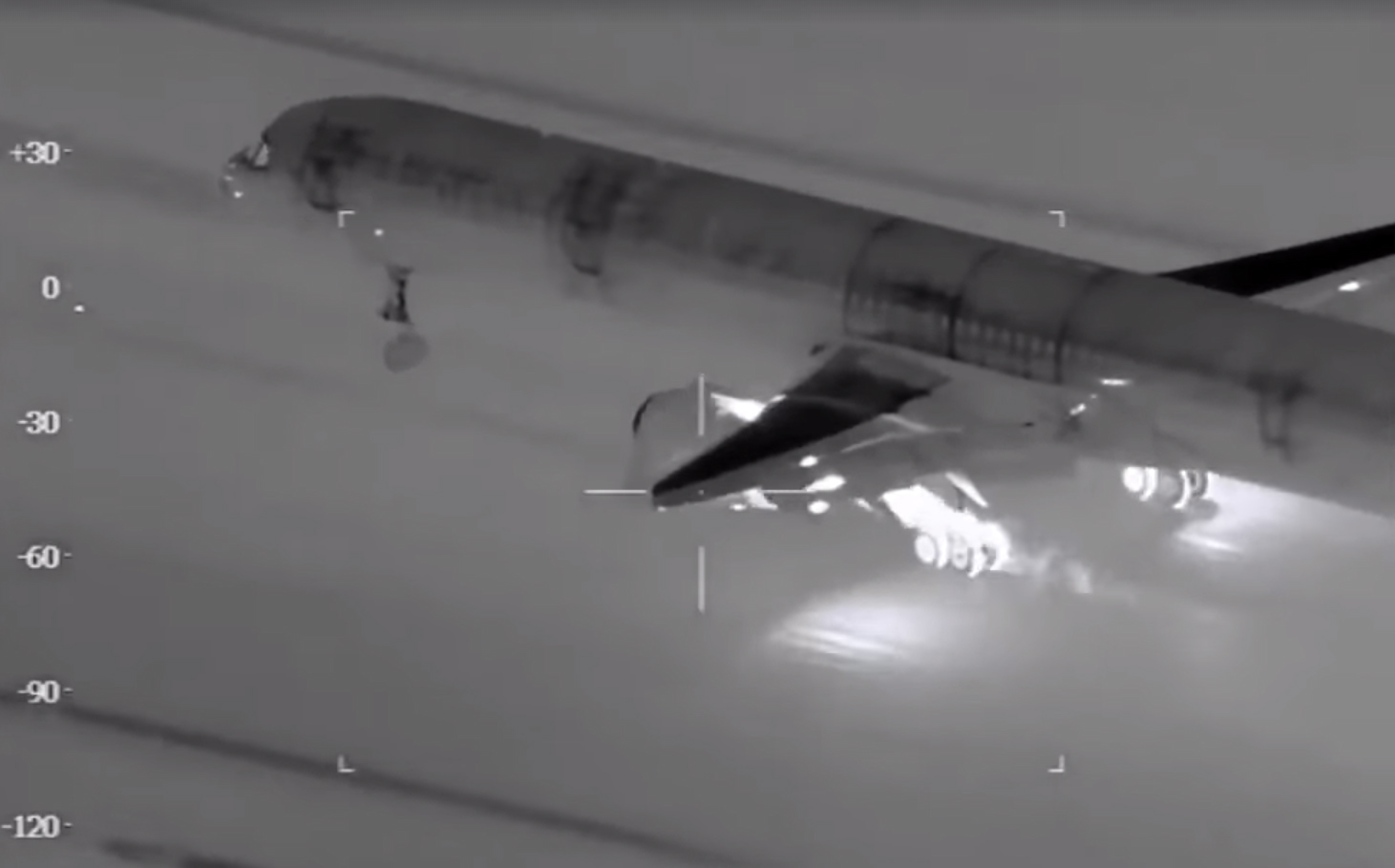
The C-17 can fly a descent profile that rivals the Space Shuttle’s descent rate on approach.
To the unfamiliar, the tactical descent of a massive C-17 Globemaster can look pretty scary. But it’s actually a permitted procedure for the airlifter. This video shows a Boeing C-17 Globemaster III doing one of its signature ‘moves’.
The Boeing C-17 has the ability to use its thrust reversers in flight. This means it can descend as fast as 20,000 feet per minute in a very controlled manner by redirecting the air flow of its engines up and forward to rapidly lose lift. A descent rate of 20,000 feet per minute is 8-10X greater than a typical airliner. Once the tactical descent is complete, the jet can rapidly configure and land… even on a dirt runway (semi-prepared).
About the C-17A Globemaster III
The Boeing C-17 Globemaster III is a large military transport plane, developed by McDonnell Douglas for the United States Air Force, between the 1980s and the early 1990s.
It was designed to transport troops and cargo all over the world. Between 1991 and 2015, roughly 280 Boeing C-17 Globemaster III aircraft have been built, at a per unit cost of 218 million (flyaway cost as of 2007).
The C-17 took its first flight on September 15th of 1991, but design flaws were soon apparent in the wings of the plane. This meant further testing was needed. In late 1993, the Department of Defense gave the manufacturers two years to solve production problems.
By 1994, the production still remained over budget. When all was said and done, delays in the creation of the Boeing C-17 Globemaster III ended up costing McDonnell Douglas 1.5 billion dollars. Finally introduced to the United States Air Force on January 17th of 1995, the Boeing C-17 Globemaster III remains in service today. Its primary users are the United States Air Force (USAF), the Royal Air Force (RAF), the Royal Australian Air Force (RAAF), and the Indian Air Force.
 Attempted Landing in extreme elements. Attempt is filmed during a test of the new MH-60 Seahawk around the Faroe Islands, where a Danish and an Australian test pilot would find the restrictions for when it’s safe to land on the Danish patrol vessels. The deck is bowing severely…
Attempted Landing in extreme elements. Attempt is filmed during a test of the new MH-60 Seahawk around the Faroe Islands, where a Danish and an Australian test pilot would find the restrictions for when it’s safe to land on the Danish patrol vessels. The deck is bowing severely…
Now THAT’s A short takeoff for a giant!

FYI: Ilopango International Airport (ICAO: MSSS) is an airport located on the eastern part of the city of San Salvador, El Salvador.
This incredible footage shows the moment a small plane crashes into the ocean off the California coast – before a pilot and his passenger on board filmed their own rescue while being stung by jelly fish and treading water.

Pilot Owen Leipelt filmed as his friend’s plane hit the water off Half Moon Bay
He alerted air traffic control and kept circling above the crash scene on Tuesday
In the water below, the pilot of the downed plane, David Lesh, was also filming
He captured the moment his plane sank before filming his rescue from the water
Both Lesh and his female passenger were rescued unharmed by the coast guard
Pictures show the plane sinking and the two survivors as the helicopter arrives
The two survivors even seem in good spirits, laughing and joking in the water
The friends had left from Reid-Hillview Airport in San Jose and were in the air together to take pictures of Lesh’s new aircraft when it lost power
The National Transportation Safety Board and the Federal Aviation Administration will investigate the accident, a spokesman confirmed Pilot Owen Leipelt filmed as the engine on his friend’s new Beechcraft Bonanza light aircraft failed and the plane hit the water off Half Moon Bay. Leipelt alerted air traffic control to the incident as he kept circling above the crash scene on Tuesday.
In the water below, pilot of the downed aircraft, David Lesh, 34, was also filming on his waterproof phone as he and his only passenger, who has not been identified, found themselves treading water for 40 minutes before being rescued. They were unharmed.
‘I was probably 3,400 feet, did everything I could. I couldn’t get the motor running and put it into the Pacific. ‘We skipped along the water for a few hundred feet and the impact was very minimal, it was not hard at all and we immediately opened the door and got out onto the wing. ‘We took a quick inventory of what was in the plane. I grabbed my cell phone and the keys to the car. ‘I knew we had about 20 or 30 seconds before it sunk.’The National Transportation Safety Board and the Federal Aviation Administration will investigate the accident, a spokesman confirmed to the DailyMail.com.
A spokesman for the FAA said: ‘The FAA and NTSB will investigate. The NTSB is the lead agency and it typically takes the NTSB a year or more to determine a probable cause of an accident.’ Lesh said he believes bad gasoline “caused the plane to malfunction.”Surprise! The Rock is a married man — he finally worked up the courage to say “I do” to his longtime girlfriend, and it went down in his home state of Hawaii.

Dwayne Johnson and Lauren Hashian tied the knot Sunday after more than a decade of dating, and they both wore white — a beautiful full-length gown and veil for her … and a button-down with white pants for him to really rock the island vibes.
The Rock shared the big news Monday morning, writing on IG, “We do. August 18th, 2019. Hawaii. Pōmaikaʻi (blessed).” He also shared a pic of himself dipping Lauren into a romantic kiss with an ocean backdrop.
His acting partner, Kevin Hart, was one of the first to congratulate him on wifing up Lauren.
The couple’s been together since 2007, and they have 2 daughters together — 3-year-old Jasmine and 1-year-old Tiana. Johnson also has an 18-year-old daughter from a previous marriage.
As for the timing of the wedding, it comes just weeks after The Rock announced he “quietly retired” from wrestling.
An amazing thermal video of Boeing 757 landing at Gatwick Airport has been taken by the UK National Police Air Service.

The thermal imaging video shows up all the “hot” spots in white and you can clearly see the engine exhaust and then on landing the wheels and brakes “light up.”



















